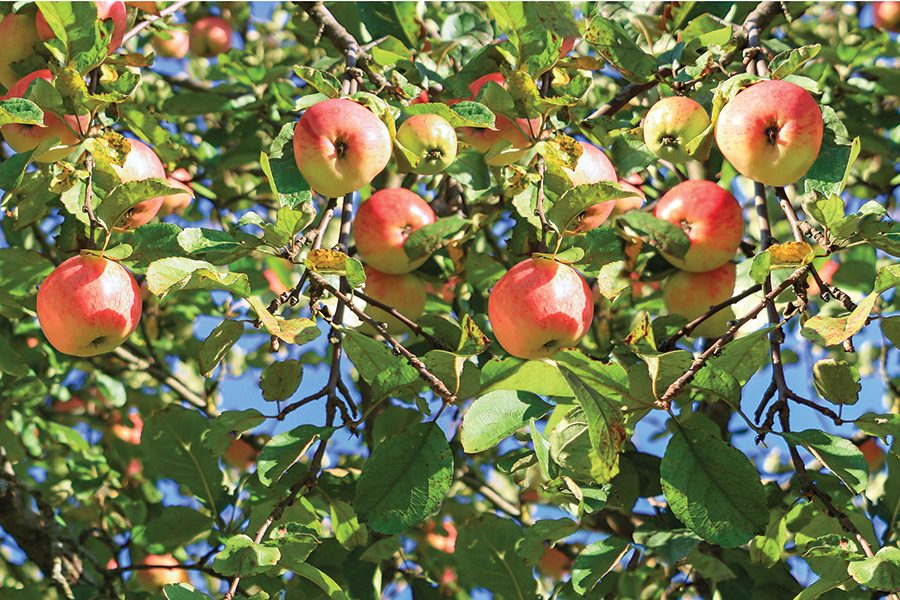
Home » Growers remain hopeful for better harvests
Growers remain hopeful for better harvests

June 14, 2023
When it comes to describing the story of Washington agriculture in 2022, a few words in particular seem to fit: Unusual. Challenging. Hopeful.
Weather played a major role in that mix, with some crops struggling and others faring well amid the cool, wet spring, brief but hot summer, and long, warm fall. Rising labor costs, a labor shortage and supply chain issues also persisted.
And government actions or inactions reverberated.
Some growers pointed to a new state law that’s phasing in overtime pay for agricultural workers. It’s been hailed as a win for workers’ rights, but it also impacts farmers’ bottom lines and, in some cases, could mean less pay for workers whose bosses can’t swing overtime and cap hours.
State agriculture experts also say greater attention to trade is needed to keep Washington commodities competitive in foreign markets.
The state did see growth in its agriculture exports in 2022 – by about 4%.
Frozen french fries and dairy were success stories in particular, while wheat and cherries saw drops.
Despite the challenges of 2022, growers and agriculture experts remain hopeful about this year and beyond. In Washington, agriculture is a leading industry, with more than 35,000 farms spread out across the state and 300-plus crops.
Pam Lewison, the Tri-Cities-based agriculture research director for the Washington Policy Center and a fourth-generation farmer, said agriculture affects everyone in the state, whether they realize it or not.
“It’s about where your food comes from,” Lewison said.
“If you are supporting local agriculture, you can be assured that your food is coming from a farm where workers have been treated and paid well, the environment has been thought about, and where your carbon footprint is much smaller,” she said. “If you’re buying asparagus from Peru, that carbon footprint is massive because that asparagus is on a refrigerated plane between South America and here. If you’re buying asparagus from a Washington grower, you have just cut your carbon footprint in half, and you have ensured that the person who hand cut and bundled your asparagus is still employed. You’re doing a service both to the farmworker community by ensuring they have somewhere to go to work, and you’re also taking care of the environment.”
“Everything is interconnected, and agriculture is one of the great examples of that,” Lewison added. “If you’re supporting local food production, you’re supporting all the other people involved in that process.”
Wine grapes
While the 2022 grape growing season got off to a slow start, the “unique” year led to a strong harvest and stellar vintage, one expert said.
“It’s going to be an exceptional year for the quality of the wines,” said Chris Stone, deputy director of the Washington State Wine Commission. “I think it will be an incredible vintage.”
In all, Washington vineyards harvested 240,000 tons of grapes in 2022, a 34% increase over 2021. That included 136,870 tons of red and 103,130 tons of white grapes. Cabernet sauvignon and chardonnay led the pack in tons harvested.
Wheat
A calamitous 2021 wheat harvest saw the lowest total production since the 1960s, but Washington wheat made a comeback in 2022 with a return-to-average crop. And weather conditions look favorable to deliver the same in 2023.
“It’s still very early, of course. We are in the growth stage at this point, but we are feeling optimistic,” said Casey Chumrau, chief executive officer of the Washington Grain Commission, the trade arm for Washington’s wheat and barley farmers.
The total in 2022 was 144 million bushels, compared to 87.1 million bushels in 2021 due to extreme drought conditions and dry soils.
Cherries
Growers are hopeful for a brighter 2023 for Northwest cherries after weather challenges the prior year. And “so far, the indications are looking pretty good,” said Jon DeVaney, president of the Washington State Tree Fruit Association, in early April.
In 2022, production dropped by roughly a third over the previous harvest. That hurt, although “they did get better pricing on the fruit they did have. The conditions didn’t affect fruit quality, just the quantity,” DeVaney said, adding that the hope is for a more normal-sized crop that allows the market to maintain good pricing.
Apples
Apple growers are hopeful for a more normal 2023 after smaller crops in the prior two years. Last year, growers brought in 102.7 million 40-pound box equivalents, a yield far below what was previously considered to be a short crop.
Weather was the culprit.
But, so far spring 2023 is panning out more predictably.
“We’re between one and two weeks later than normal, but that’s good, because occasionally we get those really cold nights, so that looks really good that we’re not at bloom yet,” said Todd Fryhover, president of the Washington Apple Commission, adding that the stress of the past couple of seasons likely will cause trees to come back healthy and put out a larger crop.
Potatoes
Washington’s potato yields are down about 9% over a two-year period.
The state’s last “normal weather” year was 2020, resulting in an average yield of 32.25 tons of potatoes per acre, said Chris Voigt, executive director of the Washington Potato Commission. In 2021, the yield dipped to 29.75 tons per acre, and in 2022, 29.25 tons per acre.
Total U.S. potato production was down 4% in 2022 compared to the previous year.
One thing is certain: the worldwide demand for potato products remains strong, and the potato industry is working on strategies to improve yields.
Hops
Last year was a challenging one for hops, but growers are hopeful for 2023.
“We’re about one week behind in heat units with another cool spring, but that’s something we can gain back and we’re still optimistic we can make that time up in the future,” said Maggie Elliot, science and communications director for Hop Growers of America, in early May.
Washington has a strong hold on the hop market for both the Pacific Northwest and the nation, producing about 70% of what’s grown in the region. In the state, aroma varieties have exploded in recent years, with Citra remaining the top crop once again, and Cascade, CTZ or Mosaic rotating around on popularity.
Asparagus
Washington leads the nation in asparagus production, but at the same time, growers grapple with challenges including stiff competition from overseas megaproducers and rising labor and production costs.
Alan Schreiber, executive director of the Washington Asparagus Commission and an asparagus farmer, wants to see more people buy from local growers.
“If every household in the state of Washington bought one more bundle of Washington-grown asparagus, that would save the western asparagus industry. It would create the demand we need to stay in business,” he said.
Last year, Washington produced 15 million pounds of asparagus, Schreiber said, adding that in 2023, “we’re hoping for a bigger crop over last year’s.”
Agriculture + Viticulture
KEYWORDS june 2023




